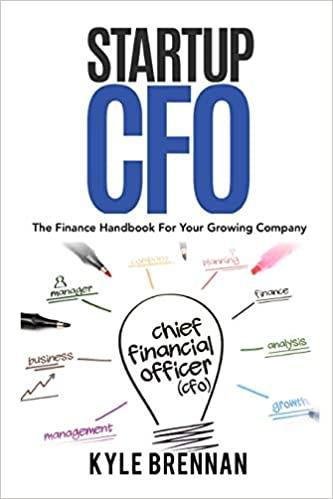Question
Shrieves Casting Company is considering adding a new line to its product mix, and the capital budgeting analysis is being conducted by Sidney Johnson, a
Shrieves Casting Company is considering adding a new line to its product mix, and the capital budgeting analysis is being conducted by Sidney Johnson, a recently graduated MBA. The production line would be set up in unused space in the main plant. The machinerys invoice price would be approximately $200,000, another $10,000 in shipping charges would be required, and it would cost an additional $30,000 to install the equipment. The machinery has an economic life of 4 years, and Shrieves has obtained a special tax ruling that places the equipment in the MACRS 3-year class. The machinery is expected to have a salvage value of $25,000 after 4 years of use.
The new line would generate incremental sales of 1,250 units per year for 4 years at an incremental cost of $100 per unit in the first year, excluding depreciation. Each unit can be sold for $200 in the first year. The sales price and cost are both expected to increase by 3% per year due to inflation. Further, to handle the new line, the firms net working capital would have to increase by an amount equal to 12% of sales revenues. The firms tax rate is 40%, and its overall weighted average cost of capital, which is the risk-adjusted cost of capital for an average project (r), is 10%.
a. Define incremental cash flow.
(1) Should you subtract interest expense or dividends when calculating project cash flow?
(2) Suppose the firm spent $100,000 last year to rehabilitate the production line site. Should this be included in the analysis? Explain.
(3) Now assume the plant space could be leased out to another firm at $25,000 per year. Should this be included in the analysis? If so, how?
(4) Finally, assume that the new product line is expected to decrease sales of the firms other lines by $50,000 per year. Should this be considered in the analysis? If so, how?
b. Disregard the assumptions in Part a. What is the depreciable basis? What are the annual depreciation expenses?
c. Calculate the annual sales revenues and costs (other than depreciation). Why is it important to include inflation when estimating cash flows?
d. Construct annual incremental operating cash flow statements.
e. Estimate the required net working capital for each year and the cash flow due to investments in net working capital.
f. Calculate the after-tax salvage cash flow.
g. Calculate the net cash flows for each year. Based on these cash flows and the average project cost of capital, what are the projects NPV, IRR, MIRR, PI, payback, and discounted payback? Do these indicators suggest that the project should be undertaken?
Step by Step Solution
There are 3 Steps involved in it
Step: 1

Get Instant Access to Expert-Tailored Solutions
See step-by-step solutions with expert insights and AI powered tools for academic success
Step: 2

Step: 3

Ace Your Homework with AI
Get the answers you need in no time with our AI-driven, step-by-step assistance
Get Started


